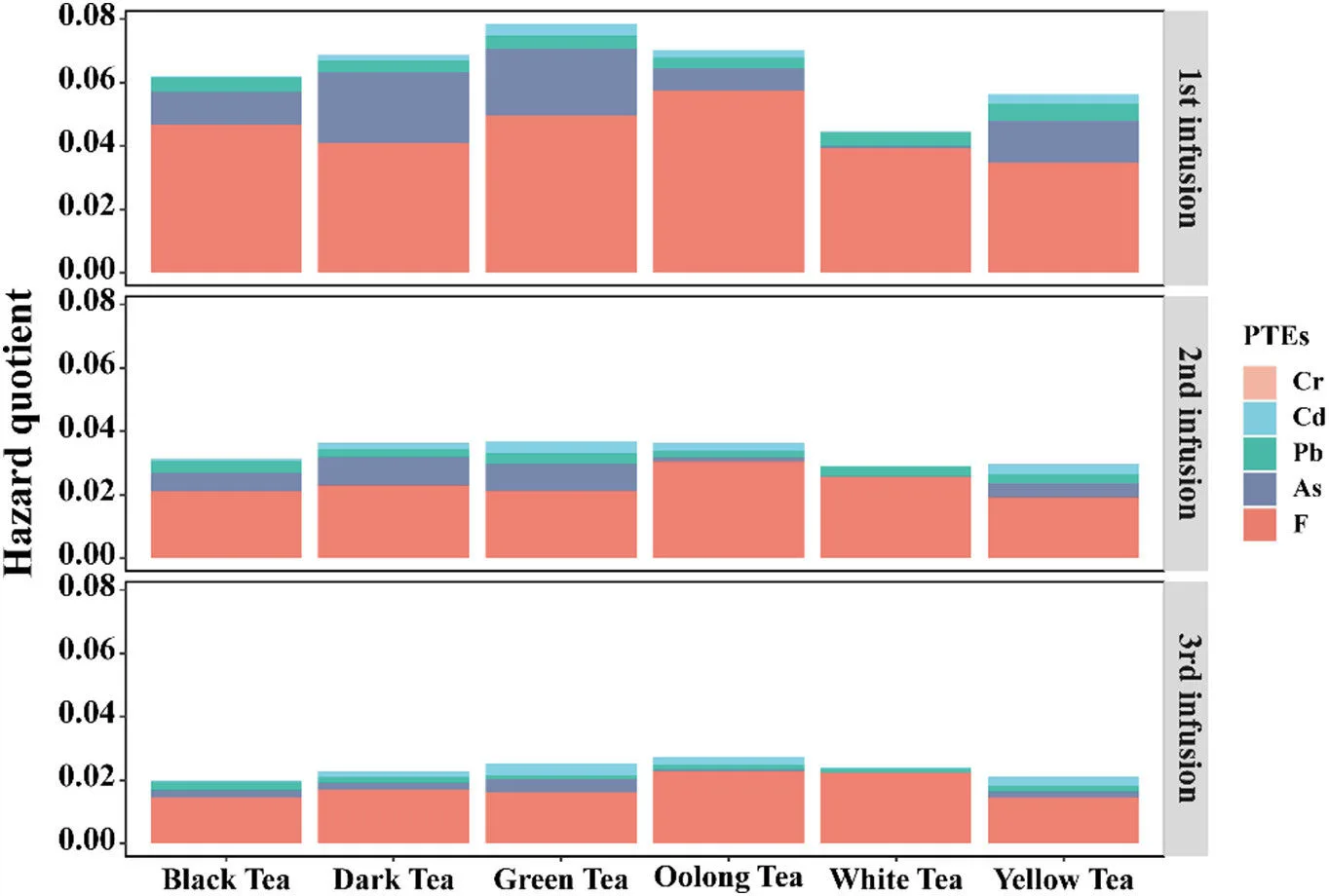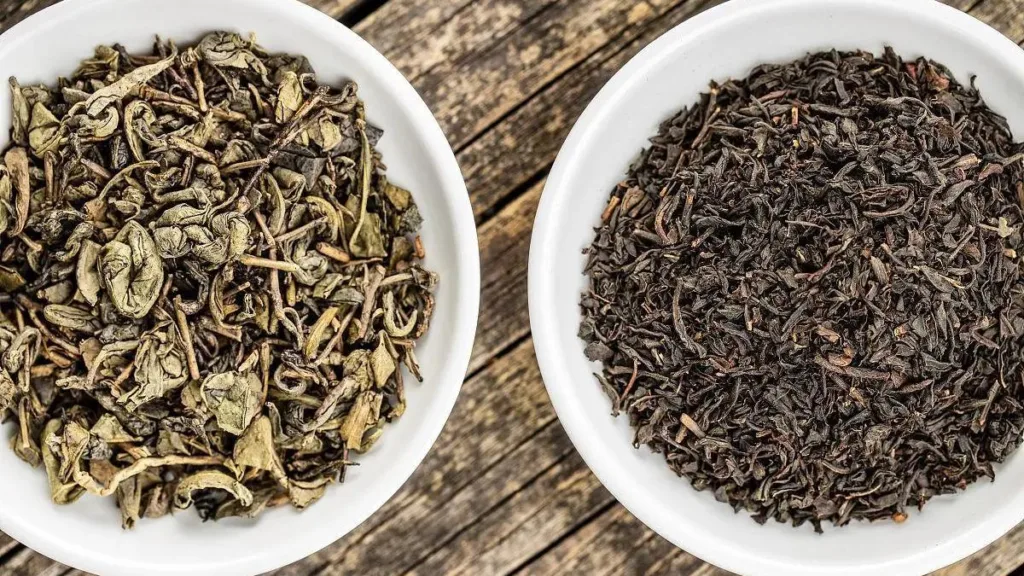Discussing whether Chinese tea, in general, is safe to consume in the context of known environmental pollution. In other words, addressing the question: Is it safe to drink Chinese tea for your health?
Due to variations in manufacturing processes, there are several types of tea popular in the market, such as green tea and yellow tea (non-fermented), black tea and red tea (fermented), oolong tea (partially fermented), and white tea (non-oxidized). Tea is known to contain a variety of organic compounds, such as catechins, flavonols, quercetin, and phenolic acids. These organic compounds can lower serum cholesterol levels, prevent the oxidation of low-density lipoprotein (LDL), and reduce the risk of cancer.
However, some research has revealed that tea may contain potential toxic elements (PTE), such as fluoride (F), cadmium (Cd), lead (Pb), arsenic (As), and chromium (Cr), which can accumulate in tea leaves and be released during the tea brewing process. The reasons for this contamination can vary, from toxic metals naturally present in the soil to human activities like industrial emissions, automobile traffic, and fertilization, which lead to the accumulation of toxic elements in the environment, including air, water, and soil, eventually being absorbed by tea plants. Prolonged exposure to these highly toxic elements, especially Cd, Pb, As, and Cr, can result in kidney dysfunction, organ damage, and an increased risk of cancer. While low doses of fluoride (F) are beneficial for teeth and bones, excessive intake of F can lead to fluorosis.
So, despite the numerous reports on the health benefits of tea, the question remains: Could the presence of these toxic elements in tea negate the advantages of drinking tea? Answering this question is essential to determine whether it is safe to consume tea.
To answer this question, there is data available today. Researchers from the College of Resources and Environmental Sciences at China Agricultural University and the Institute of Landscape and Plant Ecology at Hohenheim University sampled 249 tea samples from six different types of tea (green tea, yellow tea, red tea, black tea, oolong tea, and white tea) across 18 tea-producing provinces in China. The following map illustrates the regional distribution, but it doesn’t fully convey the richness of the samples collected. To clarify, the WS region includes Sichuan, Chongqing, Yunnan, Guizhou, while the SC region encompasses Guangxi, Guangdong, Fujian, Taiwan, Hainan, and more. The JB region comprises Shaanxi, Henan, and Shandong, and the JN region includes provinces like Jiangsu, Anhui, Hubei, Hunan, Jiangxi, and Zhejiang.
After conducting a series of experimental designs and tests, what did they find?
Discovery 1: Chinese tea has relatively low levels of toxic elements When comparing the levels of toxic elements in Chinese tea with the official safety standards set by the Chinese government (i.e., allowable safe levels), the number of tea samples exceeding these standards for certain toxic metals—Cd, As, Pb, Cr, and F—were 0%, 0.4%, 0.4%, 0.4%, and 3.6%, respectively.
Considering the total of 249 samples, fluoride (F) exceeded the standard in nearly nine samples, while other toxic metals exceeded the standard in only about one sample. This study contradicts previous claims that red and green tea are healthier, as it revealed that even in situations with relatively high levels of fluoride (F) exceeding the standard, green and red teas had the lowest fluoride (F) levels among the six tea types, with oolong tea containing the highest fluoride (F) levels. Does this increase your confidence in choosing green or red tea?
Discovery 2: Increasing the number of tea infusions reduces toxic elements in tea water The researchers stated that the dissolution of toxic elements in tea water mainly occurs within the first 5 minutes of the tea leaves coming into contact with boiling water. Fluoride (F) is more easily released into tea water compared to other toxic elements. On the contrary, chromium (Cr) is the most challenging element to be released quickly.
Comparatively, green tea showed relatively strong capabilities to release various toxic elements into water during the first three tea infusions, while white tea performed poorly. The good news is that red and yellow teas demonstrated excellent abilities to release toxic elements into water when facing higher levels of fluoride (F). This implies that it is advisable to avoid drinking the first few infusions of tea (a common practice in many places, passed down as ancestral wisdom). Additionally, green and red teas exhibit remarkable abilities to release toxic elements into water.

Discovery 3: Consuming Chinese tea doesn’t lead to significant health risks Looking at health risk indicators, the first tea infusion > the second tea infusion > the third tea infusion. This is not hard to understand because many harmful elements are quickly dissolved during the first tea infusion, and their levels gradually decrease in subsequent infusions. In the first tea infusion, fluoride (F) is still the primary harmful substance that elevates health risks, while other harmful elements are comparatively negligible. As mentioned in the introduction, the other harmful elements are the ones that pose a more substantial health risk, and the harm from fluoride (F) is relatively controllable.
In comparison, researchers believe that consuming green tea may entail slightly higher health risks, which adds to the previously mentioned issue that scientific research sometimes contradicts itself. While earlier research portrayed green tea as overall beneficial for health, this study suggests that its health risks may be relatively higher. However, today we won’t delve into the details of this contradiction, and it’s essential to understand that when considering various indicators and the level of health risk, researchers ultimately concluded that there are no substantial health hazards associated with elements in these teas. The likelihood of tea consumption leading to non-cancer or cancer risks is very low.
Of course, from the research data, it’s clear that it’s advisable to avoid the first few infusions of tea.
In conclusion, there’s no need to overly worry about health risks from consuming Chinese tea. At present, Chinese tea can be consumed safely, especially with existing evidence supporting the health benefits of black and green tea. However, moderation is key.
A special note: The data provided in this article is primarily intended to supplement previous health-related questions about black and green tea. Data related to other types of tea mentioned in this article can be found in the research report.



